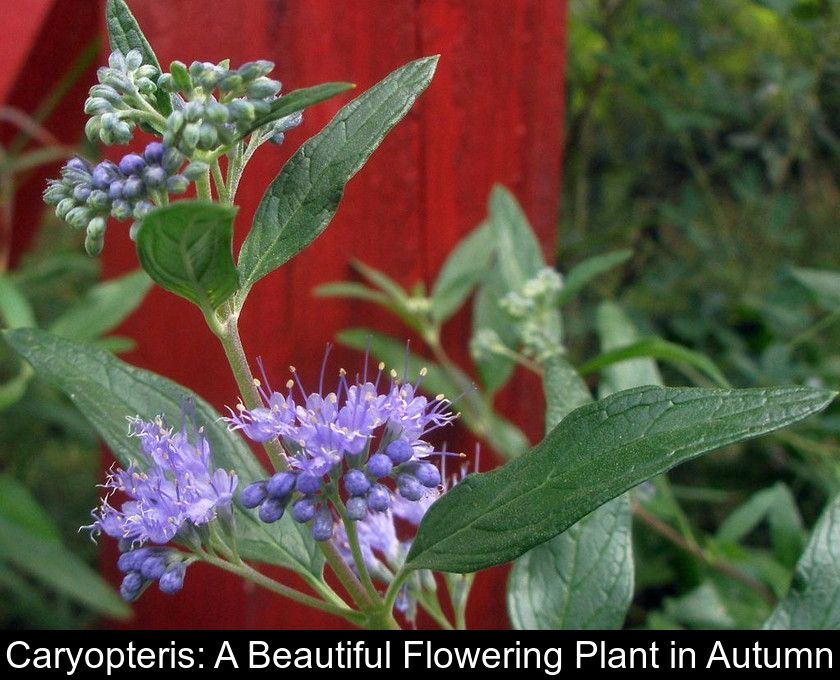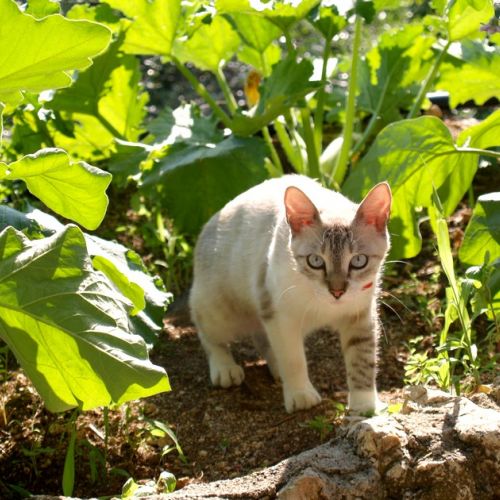Caryopteris: A Beautiful Flowering Plant In Autumn
The caryopteris is a hardy small shrub that maintains a reasonable height. Its spread isn't spectacular, but it's highly valued for its autumn blooms. It becomes covered with numerous clusters of blue flowers from August until the first frosts. We will explain how to plant and care for this shrub in 5 questions.
Which variety of caryopteris to choose?
The Caryopteris is a shrub from the Verbenaceae family. It forms dense bushes that do not exceed 1.50 m in height but are covered with a beautiful colorful bloom in autumn. The flowers of this shrub are melliferous and attract bees and butterflies! Its deciduous foliage emits an aromatic scent when crushed.
The different varieties of Caryopteris offer flowers in shades of blue, which has earned this plant the nickname "bluebeard" or "blue spirea". It is essential in a blue garden and contrasts well with other autumn blooms like chrysanthemums, for example.
The choice of a variety is usually dictated by the appearance of the plant, depending on the desired shade of blue and the aesthetic aspect of the foliage. Among the most decorative varieties, we can notably mention:
- Caryopteris Grand Bleu with its flowers of an intense dark blue.
- Caryopteris Heavenly Blue with a bloom of a beautiful intense violet.
- Caryopteris Sterling Silver whose intense blue flowers contrast with foliage with silvery reflections.
- Caryopteris Summer Sorbet very decorative with its sky-blue flowers and green foliage edged with yellow.
- Caryopteris Electrum with lavender-colored flowers and cream-white variegated foliage.
- Caryopteris Hint of Gold with golden yellow foliage.
How to plant a caryopteris?
The Caryopteris is a shrub that loves the sun and is resistant to drought and limestone soils. It is easy to grow in southern regions with a sunny climate and dry soil.
Plant it in a sunny corner of your garden, preferably in light, well-drained soil. This hardy shrub tolerates poor and stony soils.
The planting distance should be 1 meter in a bed or 50 cm to form a hedge.
If you live in an area with cold winters, place it along a south-facing wall and protect its base with a thick layer of mulch. You can also grow it in a pot to shelter it from frost in winter.
Note: Pure species of Caryopteris are hardy down to -5°C or -10°C, while hybrids are a bit more cold-resistant, down to -15°C.
How to maintain a caryopteris?
Caryopteris is a very interesting shrub for several reasons. It is first and foremost appreciated for its blue bloom at the end of the season as it is covered with small clusters of flowers from August until the first frosts.
But that's not all: it also has the advantages of being resistant and easy to maintain. This very accommodating plant grows quickly in a sunny perennial bed, in a rock garden, or in a pot.
If you plant it in the ground, it will require little care as it is drought-resistant, cold-resistant, and resistant to most diseases.
If you grow it in a pot, you will need to water it when the soil dries out on the surface. You can also apply fertilizer for flowering plants in the spring.
In any case, the most important maintenance step is to prune it severely once a year.
How to prune a Caryopteris?
To achieve an even more spectacular bloom in late summer and early fall, it is very important to prune the caryopteris after it has flowered.
Do not hesitate to practice a severe pruning every year! You should remove all of the aerial part of the plant down to about 5 cm from the stump. The correct method is to cut at the level of the buds or eyes that are located as close to the woody stump as possible.
In regions with a cold climate, it is preferable to perform this severe pruning in autumn to better protect the stump from frost. In areas with a milder climate, a spring pruning promotes a quicker start and helps maintain a compact shape for this shrub.
After each pruning, you can give this plant a little rose fertilizer to stimulate the upcoming bloom.
How to propagate a caryopteris through cuttings?
All varieties of caryopteris can be propagated by cuttings.
Two methods of cutting can be used at two different times of the year:
1- The enclosed cutting in July and until the beginning of August
2- The hardwood cutting in November.
The first method is the easiest. Simply cut pieces of stem 10 to 20 cm long, below a node, from a current year's green stem without flowers.
If the stem has flower buds, they should be removed along with any leaves on the lower part of the cutting. Keep only half of the upper leaves, then transplant the cutting into a pre-moistened seed compost.
Cover the pot with a bell jar, a plastic bag, or a mini greenhouse so that it develops in an enclosed environment. However, be careful: the cutting should not touch the cover, as it may rot!







